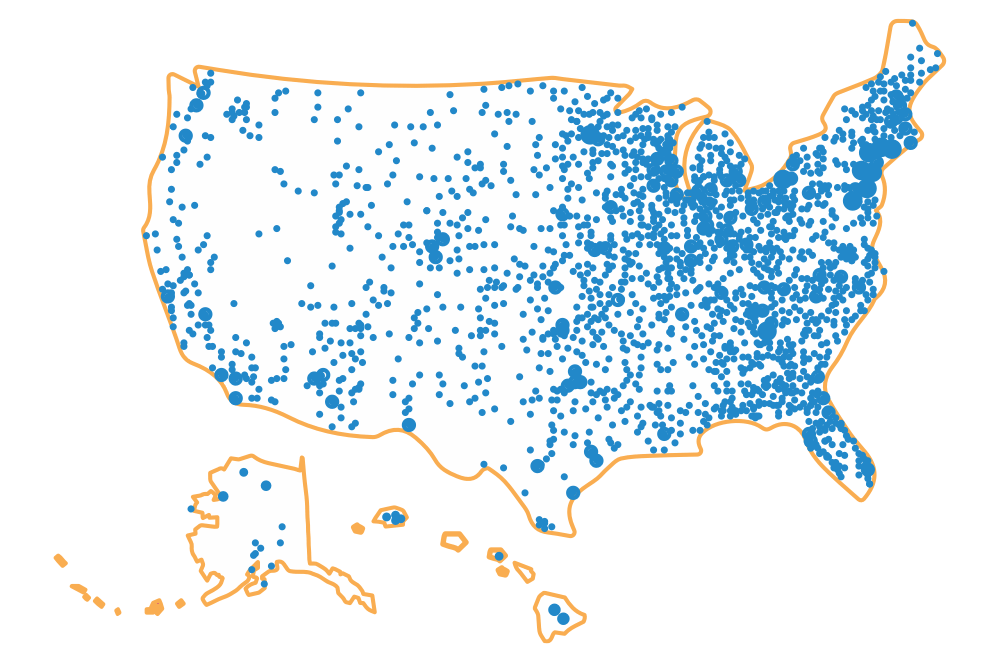As you stare into the eyes of your little bundle of joy, you can easily envision them picking up the tools of your trade or walking across the campus of your alma mater. And then you start saving in Ohio 529 CollegeAdvantage to make those dreams come true.
But so much can change between now and the time your kids finish high school, which is why an Ohio 529 Plan is built for change.
Saving with Ohio 529 provides more flexibility than you probably realized. Here are all the ways you can adapt your Ohio 529 account to your family’s needs.
Save here, use anywhere
Are you thinking that you may need to move to a different state for your job or to be closer to family after you started to save with Ohio 529? Then you do not need to worry about being able to use your Ohio 529 account in your new home. Saving in an Ohio 529 Plan does not mean that you can only use your college savings in Ohio; you can use it at any school that accepts federal financial aid. Nationwide.
Use at different schools
Your Ohio 529 account can be used at different higher education institutions. Not only can you use your 529 savings at four-year colleges and universities, but also two-year community colleges, trade or technical or vocational schools, certificate programs, apprenticeships approved by the U.S. Labor Department, or graduate schools. There are over 30,000 schools of all kinds at which you can use your Ohio 529 plan across the country.
While your child may not want to pursue a four-year degree, they may see the benefits of a trade or certificate program. You can use your Ohio 529 funds to pay for their qualified higher education expenses at a trade school. Or maybe your child is brilliant at coding and wants to pursue a career with a certificate program. Your Ohio 529 savings can pay for their qualified costs for that program. If your child wants to pursue an apprenticeship to receive hands-on training in a skilled profession, you can take a qualified 529 distribution to pay for the fees, textbooks, supplies, and equipment like required trade tools.
Roth IRA Rollover
It’s been over a year since the tax-free and penalty-free 529-to-Roth IRA rollover was added as a 529 benefit. As of Jan. 31, 2025, over 1,800 CollegeAdvantage account owners taken advantage of this new qualified withdrawal and rolled over their Ohio 529 plans to Roth IRAs.
529-to-Roth IRA rollover is just another highlight of the flexibility of saving with Ohio 529 CollegeAdvantage. It shows that even if your child’s plans change, you always have access to your 529 funds. Instead of using your savings for their college savings, you can now give your child a head start on their retirement savings. There are prerequisites that must be met to take advantage of this new benefit. You should consult a financial professional or tax advisor regarding the applicability of these rollovers to your personal situation.
If you have any additional questions, please reach out to the Ohio 529 Customer Service Representatives at 1-800-AFFORD-IT (233-6734) 8:30 a.m.-6 p.m. EST Monday-Friday.
Many different qualified costs
The 529-to-Roth IRA rollover joins the long list of other qualified higher education expenses for which you can pay for with a tax-free 529 withdrawal. These required costs include tuition; room and board on and off campus; mandatory fees; computer equipment and related technology as well as internet services; books, supplies and equipment related to enrollment and class schedule; and certain expenses for a special-needs student.
A 529 withdrawal can also cover qualified apprenticeships costs such as fees, textbooks, supplies, and equipment like required trade tools. The apprenticeship program must be registered with the U.S. Labor Department to take advantage of the tax-free 529 withdrawal. Check their search tool to confirm that a program is registered.
Did you know that you can pay for K-12 tuition up to $10,000 per student, per year, for enrollment at public, private, or religious elementary or secondary school with a 529 withdrawal? 529 distributions for K-12 tuition are limited to $10,000 per year. Consult your qualified tax advisor for specific information.
Lastly, a tax-free 529 withdrawal can be used for the payment of the principal and interest on qualified education loans for your 529 beneficiary or their siblings. The loan repayment provision applies to repayments up to $10,000 per beneficiary. The $10,000 is a lifetime amount, not an annual limit. Consult a financial professional or tax advisor regarding the applicability of this qualified expense to your personal situation.
No higher education? No problem.
You have many options on how to use your 529 account if your child decides not to pursue their higher education.
First, 529s do not come with a deadline of when you must use it. So, if your child decides not to head to college right after their high school graduation, your 529 is ready whenever they want to start, whether at 18, 28, or 58. When they decide to finally seek a college education or learn a trade, your 529 plan is ready to cover their qualified higher education expenses. Until that time, your college savings account can continue to build through tax-free earnings.
Second, if your child decides that they will not be pursuing education after high school, you can transfer your Ohio 529 savings to another beneficiary. The new 529 beneficiary must be a member of the family to your child – whether by blood, marriage, or adoption. This list includes siblings, stepsiblings, stepparents, cousins, nieces, and nephews. You can even roll over the account to yourself to fund your own continuing education. Since there are no time limits for using 529 plans, you could also hold onto the already established Ohio 529 account for your future grandchildren’s future college costs.
Third, you can use the 529 funds to pay for your other children’s qualified student loans.
Fourth, you can access your Ohio 529 funds through a non-qualified withdrawal. This means that the earnings-only portion of the withdrawal will be taxed on the federal, state, and local level. Like other tax-advantaged saving programs, there will be a 10% federal tax penalty assessed for withdrawing money from the 529 plan for costs that are not qualified higher education expenses. If you are an Ohio resident that has received the state tax deduction due to your Ohio 529 contributions, you will also be responsible for paying back that benefit.
As the 529 account owner, you can direct the non-qualified withdrawal to your child who is the beneficiary. Before you elect to make a non-qualified withdrawal, first talk with your financial advisor or tax consultant to evaluate your options.
Since 1989, Ohio 529 CollegeAdvantage has been helping families across the nation save for their children’s education after high school. Ohio’s 529 Plan covers qualified costs at any four-year college or university, two-year community college, trade or vocational school, apprenticeship approved by the U.S. Labor Department, or certificate program nationwide that accepts federal financial aid. Learn, plan, and start with as little as $25 at CollegeAdvantage.com.


















